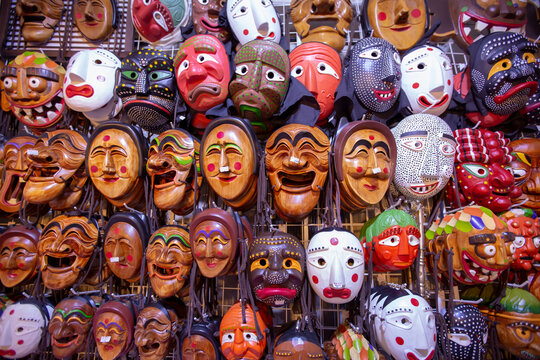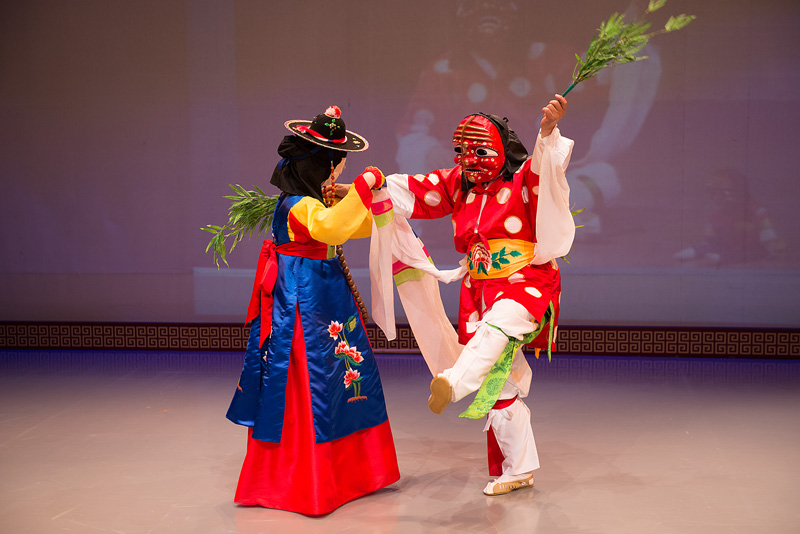Fall 2023 SDLC111
Cultural Post #2
탈 Tal
David Kim
30262888
david.kim123@richmond.edu
Korean masks 탈 Tal are traditional masks with deep cultural and historical significance. These masks have been used for various purposes in Korean culture, including shamanistic rituals and theatrical performances. They come in a variety of styles and designs, each serving a specific purpose.
In traditional Korean shamanism, masks represent the connection with the spirit world. The masks were believed to serve as a conduit between the human and spirit worlds. Shamans, known as 무당 mudang or 무교 mugyo, would wear masks during ceremonies to embody the spirits they were invoking. The movements and dances performed while wearing the mask were considered a form of spiritual expression. They also believed to have the power to ward off evil spirits, bring blessings, and facilitate communication with ancestors or divine entities. Different masks were used for different purposes, depending on the nature of the ritual. The masks used in these rituals were not just decorative. They held significant spiritual meaning and symbolic significance. For example, masks might represent specific animals, mythical creatures, or deities. The choice of a particular mask would be based on the spiritual intent of the ritual. Overall, the ceremonial use of Korean masks reflects the multifaceted nature of Korean culture and its rituals and beliefs.
Tal were not limited to spiritual rituals. They were also used in festivals and celebrations. Certain festivals involved masked dances and processions, bringing communities together in a joyful manner. Tal masks are often integral to traditional Korean mask dances 탈춤 Tal-chum (Tal Dance) and plays 탈놀이 Tal-nori (Tal Play) that depict stories from folklore, mythology, and historical events. These performances serve as a means of storytelling, preserving cultural narratives, and passing down traditions from generation to generation. Tal performances often have an educational aspect, especially when they are used to retell historical events or convey moral lessons. Through the use of masks, performers can engage audiences in a visually captivating way, making the stories more accessible and memorable. Tal performances play a crucial role in preserving and promoting Korean cultural identity. By showcasing traditional art forms, including mask dances and plays, these performances contribute to the continuity of cultural practices and help maintain a sense of identity in a rapidly changing world. Tal combines entertainment, cultural preservation, education, and a celebration of identity, offering audiences a look into Korean traditions and artistic expression.
Tal are crafted using materials like wood, paper, and gesso (a type of plaster). Skilled artisans create intricate designs, and the masks are often painted in vibrant colors. There are various types of Korean masks, including 하회탈 Hahoe masks and 양주탈 Yangju masks. Hahoe masks, from the Hahoe village, are known for their realistic and expressive features. Artisans carefully carve and paint Tal, making each one as a unique work of art. Yangju masks, from the Yangju region, are commonly used with traditional mask dances and performances that have been passed down through generations.
If you have the chance to visit Korea, I hope you experience making your own Tal, wear different types of Tal, and watch a dance or a play using Tal. Tal is a unique cultural artifact that combines spiritual, cultural, and artistic aspects of Korea.
https://encykorea.aks.ac.kr/Article/E0058798
https://www.antiquealive.com/Blogs/Korean_Mask.html
탈 Tal (Korean Masks)

하회탈 Hahoe masks

양주탈 Yangju masks

탈춤 Tal-chum (Tal Dance)

탈놀이 Tal-nori (Tal Play)


Comments
I have seen Tal masks multiple times before but never the history behind them. Hopefully one day when visiting Korea I will be able to see a dance or play featuring these traditional masks.